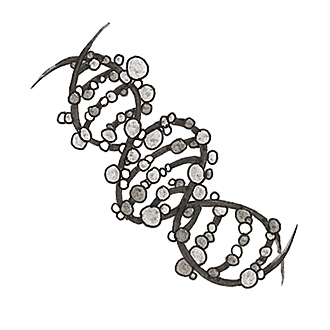
Related Questions
- How do medicines know where in the body to start working?
- Why do I have to take some medications every four hours but others only once a day?
- What is the impact of follow-through in golf?
- If I have a high risk of cancer, can my genes be modified to avoid it?
- Can medical prostheses advance further, and what are their potential risks?
- Can hearts, livers, and kidneys be grown in the lab for human transplants?
- How did life on Earth begin?
- Is sleep necessary?
- How are thoughts measured?
- Why do we sweat more in high humidity?
Why does our hair turn gray — as opposed to green or some other color — as we age?
Gray hair, sagging skin, wrinkles — all signs of aging can be traced to the same cause: dying cells…
By Deborah HalberGray hair, sagging skin, wrinkles — all these signs of aging can be traced to the same cause — dying cells, said MIT biologist Lenny Guarente, author of the 2007 book Ageless Quest.
Hair follicle cells cooperate with cells that produce pigments such as melanin that make hair shades of brown, black, blond or red, said Guarente, a pioneer and leader in the study of the molecular biology of aging. As we get older, the pigment-producing cells fail, and the only thing left is the white, unpigmented protein that makes up the hair shaft.
“The reason we lose the ability to make the pigments is that we lose a lot of cells as we get older,” he said, including the subcutaneous fat cells that keep skin looking smooth and wrinkle-free. “Those cells die with age. A lot of the physical aspects of aging can be explained by damage to important macro-molecules and death of cells.”
Guarente’s lab studies sirtuins — proteins that are now understood to retard aging in a wide variety of organisms. While he is interested in reversing symptoms of age-related diseases, not improving appearance, he expects that his work, which “attacks the aging process high up in the heierarchy” may affect a lot of things in the mix — including, potentially, graying hair. At MIT, one-third of the engineers now work on biological problems, including cancer research.
Posted: December 18, 2008